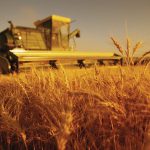1. Introduction
Modern farming in Iran has come a long way in recent years. Thanks to advances in technology, Iranian farmers are now able to produce more food than ever before while using fewer resources.
What’s more, the application of modern farm management practices is helping to improve the quality of life for farmers and their families.
In this article, we’ll take a look at some of the most important themes of modern farming in Iran. Also, we’ll touch on the bright future that lies ahead for Iranian agriculture.
2. Iran’s Agricultural Ties to the World
Iran is a country with a long history of agriculture. For centuries, farmers in Iran have cultivated a wide variety of crops, including wheat, rice, fruits, and vegetables. Today, agriculture is still an essential part of Iran’s economy, and the country exports a considerable amount of agricultural products to the rest of the world.
Iran’s agricultural ties to the rest of the world are important for several reasons. First, they provide a valuable source of revenue for the country. Second, they help to ensure food security for Iran’s citizens. And third, they provide a way for Iran to build relationships with other countries.
As Iran continues to develop its agricultural sector, Iran is on track to become even more of a player in the agricultural world in the coming years as a result of its growing population and economy.
3. Themes of Modern Farming in Iran
- Poverty alleviation
- Improving women’s empowerment
- Reducing environmental impact
- Strengthening food security
For centuries, farmers in Iran have worked to cultivate the land and produce crops that can feed the country’s large population. Today, farming in Iran is undergoing a modern transformation, as new technologies and practices are being adopted to improve the country’s food security and reduce poverty. Here are four of the most prominent themes of modern farming in Iran.
Poverty alleviation:
One of the main goals of modern farming in Iran is to reduce poverty levels among rural communities. Farmers are adopting new technologies and practices that can improve yields and make farming more efficient. Additionally, the government is investing in infrastructure and services that can help farmers access markets and sell their products at higher prices.
As a result of these efforts, poverty levels in rural Iran have fallen from 24 percent in 2011 to 16 percent in 2016. However, there are still significant disparities between rural and urban areas, with poverty levels in urban areas standing at just 8 percent.
Improving women’s empowerment:
In recent years, there has been a trend towards modern farming practices in Iran, with a focus on improving women’s empowerment. This has led to several changes in the way that farming is done in Iran, including the use of new technologies and the introduction of new crop varieties.
There are many reasons why this trend is taking place. One reason is that the government is investing more in the agricultural sector. Another reason is the increasing number of women taking up farming as a profession. This leads to a greater understanding of the needs of women farmers and a commitment to empowering them.
The trend toward modern farming in Iran is having a positive impact on women’s empowerment. It is providing women with new opportunities to enter the agricultural sector and to improve their livelihoods.
Reducing environmental impact
Farming in Iran has come a long way in recent years. With a growing population and an increased demand for food, Iranian farmers have had to find ways to increase production while reducing environmental impact. And they’ve done just that.
Today, Iranian farmers are using modern techniques and technology to produce food in a sustainable way. They’re reducing water usage, increasing crop yields, and using less chemical pesticides and fertilizers. As a result, they’re having a positive impact on the environment and the economy.
Iranian farmers are leading the way in sustainable agriculture, and their example is one that the rest of the world can learn from.
Strengthening food security
Modern farming in Iran is characterized by an increasing emphasis on food security. In recent years, the government has been investing heavily in agricultural research and development, as well as in infrastructure and subsidies for farmers. This has led to a more efficient and productive agricultural sector, which is vital for Iran’s food security.
The government’s focus on food security has also led to a greater emphasis on self-sufficiency and on producing high-quality food. In particular, there has been a push for organic and traditional farming methods, as well as for the production of traditional Iranian food products. This is all part of the effort to make sure that Iranians have access to healthy and nutritious food.
4. Iranian farm management software plays a key role in modern agriculture
In recent years, Iran has seen a major shift in its farming practices. In the past few decades, agricultural technology has allowed farmers to enhance yields and improve the quality of their crops.
One of the most popular new tools is farm management software.
Farm management software helps farmers track information about their crops and livestock, as well as the weather and soil conditions. This information can be used to make better decisions about when to plant, how to irrigate, and when to harvest. The software also makes it easier to keep track of expenses and income, so that farmers can make their operations more efficient and profitable.
With farm management software, farmers in Iran are able to produce more food with less effort. Not only is it beneficial for the country’s economy, but also it is favorable for the environment.
5. Economic Opportunities for Iranian Agriculture
The 21st century has brought with it a new era of opportunity for farmers across the globe. With the advent of modern technology, farmers are now able to increase their yields and produce crops more efficiently than ever before.
In Iran, the agricultural sector has been one of the most important contributors to the country’s economy. In recent years, however, the sector has been facing difficulties due to a number of factors, including sanctions and the government’s economic policies.
Despite these challenges, there are still many opportunities for farmers in Iran. With the right strategies and investments, the agricultural sector can once again become a major contributor to the country’s economy.
6. The Bright Future of Iranian Agriculture
In the past century, Iranian farmers have produced some of the world’s finest crops. However, Iranian agriculture has been facing some challenges lately. A combination of factors, including climate change, has led to a decline in crop yields.
But despite these challenges, there is still a lot of hope for the future of Iranian agriculture. Farmers are adopting new techniques and technologies that are helping them to overcome these challenges. And as the world becomes more connected, Iranian farmers are finding new opportunities to sell their products to a global market.
The future of Iranian agriculture is bright. With the help of modern technology and the commitment of its farmers, Iran will continue to be a major player in the global agricultural market.



